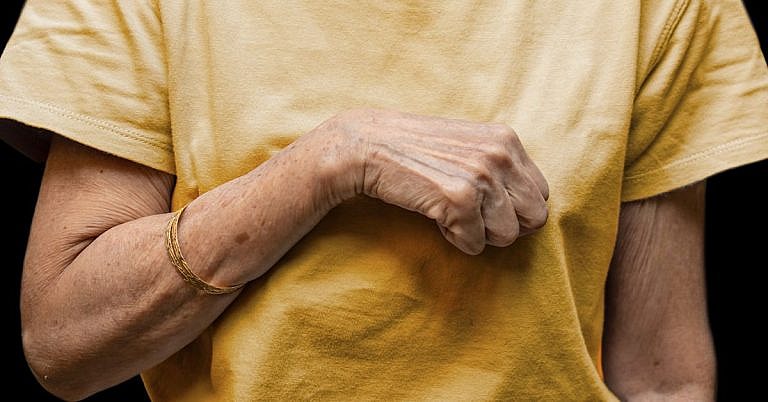What is Fibromyalgia?
[trp_language language=”en_US”]
Fibromyalgia is a chronic pain syndrome characterized by widespread muscular pain and tenderness. Locations typically fluctuate among the muscles, joints and back. Other symptoms are abdominal pain, headache, generally feeling unwell, morning stiffness, and poor quality of sleep. There is yet no fully clarified cause of fibromyalgia, but it strongly shows a tendency to run in families. It tends to affect women between the ages of 20 and 50 years. The diagnosis of fibromyalgia is based on the pattern and duration of symptoms and excluding other possible causes for the symptoms. Exercise, pain medications and emotional support are the pillars of treatment. There is no specific cure for fibromyalgia. Some people learn to manage their symptoms and some people may have pain which does not respond well to treatment.
Risks
The causes of fibromyalgia are largely unknown. There are several factors that may combine to trigger the symptoms of fibromyalgia. These include having a family member who also suffers from fibromyalgia, depression, disturbed sleep, stress, and suffering a muscular injury or emotional trauma. It most commonly occurs in women between the ages of 20 and 50 years.
Symptoms
The main symptom of fibromyalgia is a deep burning pain or ache which occurs in muscles on both sides of the body and in multiple areas. Other symptoms may include feeling unusually tired, difficulty sleeping, difficulty concentrating and memory problems.
Diagnosis
The diagnosis may be made based on the symptoms, the duration of pain and the physical examination. A diary of symptoms may help to make the diagnosis. A blood test may also help to confirm the diagnosis in some people, but a normal or negative result does not exclude fibromyalgia. However, to confirm the diagnosis, a doctor should exclude other possible causes of the symptoms. Blood and urine tests are often done with the aim of excluding other conditions.
Treatment
Treatment of fibromyalgia can be difficult because the cause is not well understood. Physical therapy and exercise programs are very effective in reducing pain and muscle stiffness for people with fibromyalgia. Some people also find stress-relieving activities helpful. Simple pain relief, such as paracetamol, may provide some relief, as may using hot packs or massage. People who don’t get relief through these methods should see a pain specialist, who may be able to recommend other medications. Many people with fibromyalgia find support groups or counseling helpful in coming to terms with the diagnosis and dealing with the long-term pain.
Other names for fibromyalgia
- Diffuse myofascial pain syndrome
- Fibromyalgia-fibromyositis syndrome
- Fibromyalgia syndrome
- FMS
- Muscular rheumatism
[/trp_language]
[trp_language language=”ar”][wp_show_posts id=””][/trp_language]
[trp_language language=”fr_FR”][wp_show_posts id=””][/trp_language]
**What is Fibromyalgia?**
Fibromyalgia is a chronic condition that causes widespread pain and tenderness in the muscles, tendons, and ligaments. It affects approximately 2-8% of the population, more commonly women between the ages of 30 and 50.
**Symptoms of Fibromyalgia**
In addition to widespread pain, fibromyalgia can cause other symptoms, including:
* Fatigue
* Difficulty sleeping
* Headaches
* Brain fog (impaired cognitive function)
* Sensitivity to pain (hyperalgesia)
* Gastrointestinal problems (such as bloating, pain, or diarrhea)
* Mood swings or anxiety
* Stiffness upon waking
**Causes of Fibromyalgia**
The exact cause of fibromyalgia is unknown, but several factors are thought to contribute, including:
* **Genetics:** Family history is a risk factor for fibromyalgia.
* **Trauma:** Physical or emotional trauma may trigger the onset of fibromyalgia.
* **Hormonal changes:** Women are more likely to develop fibromyalgia than men, suggesting a role for hormones.
* **Infections:** Certain infections are associated with an increased risk of fibromyalgia.
* **Autoimmune disorders:** Fibromyalgia is often associated with autoimmune disorders such as lupus and rheumatoid arthritis.
**Diagnosis of Fibromyalgia**
Fibromyalgia is diagnosed based on a patient’s symptoms and a physical examination. There is no specific diagnostic test. Doctors usually perform a series of tests to rule out other conditions that cause similar symptoms, such as lupus, multiple sclerosis, and chronic fatigue syndrome.
**Treatment for Fibromyalgia**
There is no cure for fibromyalgia, but treatments can help manage the symptoms. These treatments include:
* **Medication:** Pain relievers, muscle relaxants, antidepressants, and anti-seizure medications can all help reduce pain and other symptoms.
* **Exercise:** Regular exercise can improve flexibility, reduce pain, and boost mood.
* **Cognitive-behavioral therapy (CBT):** CBT can help patients develop coping mechanisms for dealing with pain and fatigue.
* **Massage therapy:** Massage can help reduce pain and stiffness.
* **Acupuncture:** Acupuncture may provide some pain relief for fibromyalgia patients.
**Outlook for Fibromyalgia**
Fibromyalgia is a chronic condition, but most people can lead full and productive lives with proper management. By working with their healthcare providers, patients can develop a treatment plan that helps them manage their symptoms and improve their quality of life.








Tip of the hat to a great succinct, targeted headline that hits the mark and engages readers. An 8 out of 10.
What is Fibromyalgia